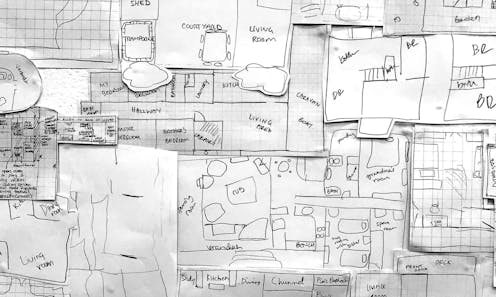How to write about broken trust in a memoir? Janine Mikosza’s Homesickness maps trauma in bold new ways
- Written by Marina Deller, PhD Candidate, Flinders University

[…] what would it mean if you moved from house to house regularly? What would that do to your idea of yourself? How does it construct or alter the space inside you, your internal floor plan?
I am accustomed to reading difficult things. I affectionately refer to my research as “morbid” and I have indeed read many heartbreaking, dark books.
Despite my familiarity with the subject matter of trauma memoirs, Janine Mikosza’s Homesickness[1] caught me off guard. For want of a less romantic phrase, it swept me off my feet. Her approach to writing trauma while processing trauma is revolutionary.
By revisiting the many homes she lived in during childhood, Mikosza maps the floor-plan of trauma (literally and figuratively) and unearths myriad truths about home, identity and loss.
Review: Homesickness – Janine Mikosza (Ultimo Press).
In an opening passage of Homesickness, Mikosza writes:
I’m afraid of everything, she says […] Nah, that’s a lie, she goes on. I’ve never been scared of driving fast on a gravel road, riding a runaway horse, losing my sense of direction in an unfamiliar city, swimming in an ocean at king tide, helping someone out in a crisis. But the rest of my fear is as real as it was when I was eight years old.

















